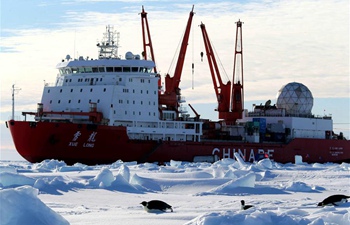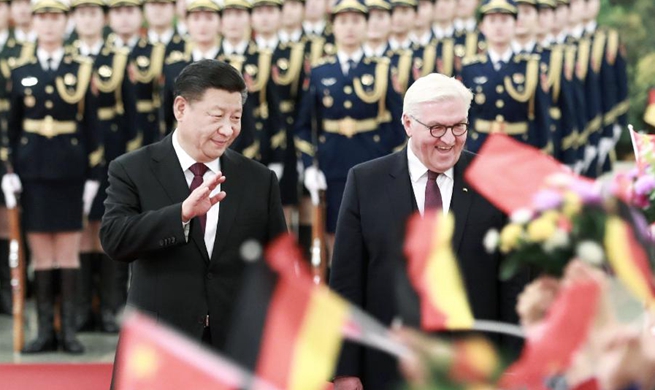ULAN BATOR, Dec. 11 (Xinhua) -- Mongolia's long-term economic outlook is promising, Yolanda Fernandez Lommen, the Asian Development Bank (ADB) country director for Mongolia said.
"The Mongolian economic growth is forecast to reach 6.4 percent this year and 6.1 percent next year," Lommen told Xinhua in a recent interview.
This growth is largely driven by massive foreign direct investment in the country's Oyu Tolgoi copper-gold mine, estimated at 1.1 billion U.S. dollars in each year respectively, she explained.
"This is remarkable because the country was a in a deep economic crisis just a couple of years ago," the country director said.
The Oyu Tolgoi mine, located in a gobi desert 80 km north of Mongolia's border with China, is expected to produce 430,000 tons of copper and 425,000 ounces (about 12,050 kg) of gold annually for 20 years.
The contribution of mining to growth is projected to turn positive in 2018 and be higher in 2019, Lommen said, adding that the construction sector is to recover along with increasing mining activities, she said.
Domestic consumption will be supported by an increase in government expenditures, household incomes and consumer confidence gained from economic recovery, Lommen said.
The ADB projects an average inflation at 7.2 percent in 2018 and 7.0 percent in 2019, close to the government's target of 8.0 percent.
Lommen said that rising domestic demand, oil and global food prices as well as effects from a looser monetary policy last year has driven higher inflation in 2018.
Fiscal policy will remain expansionary in 2019, with rigorous tax reforms supporting small- and medium-sized enterprises.
Upbeat about Mongolian's long-term economic prospects, the ADB country director said:"large ongoing mining projects are expected to turn the balance of the fiscal budget and the balance of payments into surpluses in the years ahead."
Meanwhile, she stressed that for a mining-dependent economy like Mongolia, "more is needed" apart from well taping its mineral wealth.
In addition to economic diversification and higher productivity, more efforts should be made to ensure macroeconomic stability as well as sustainable and inclusive growth of its economy.













